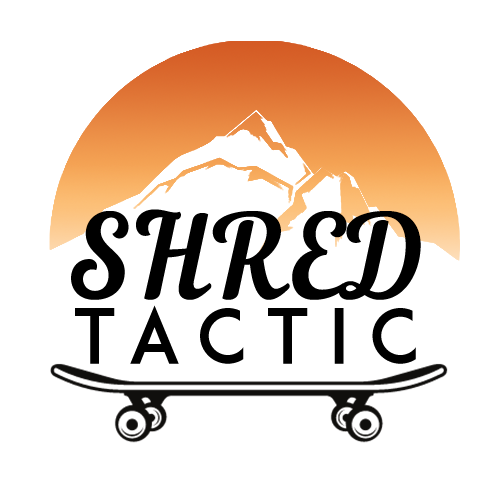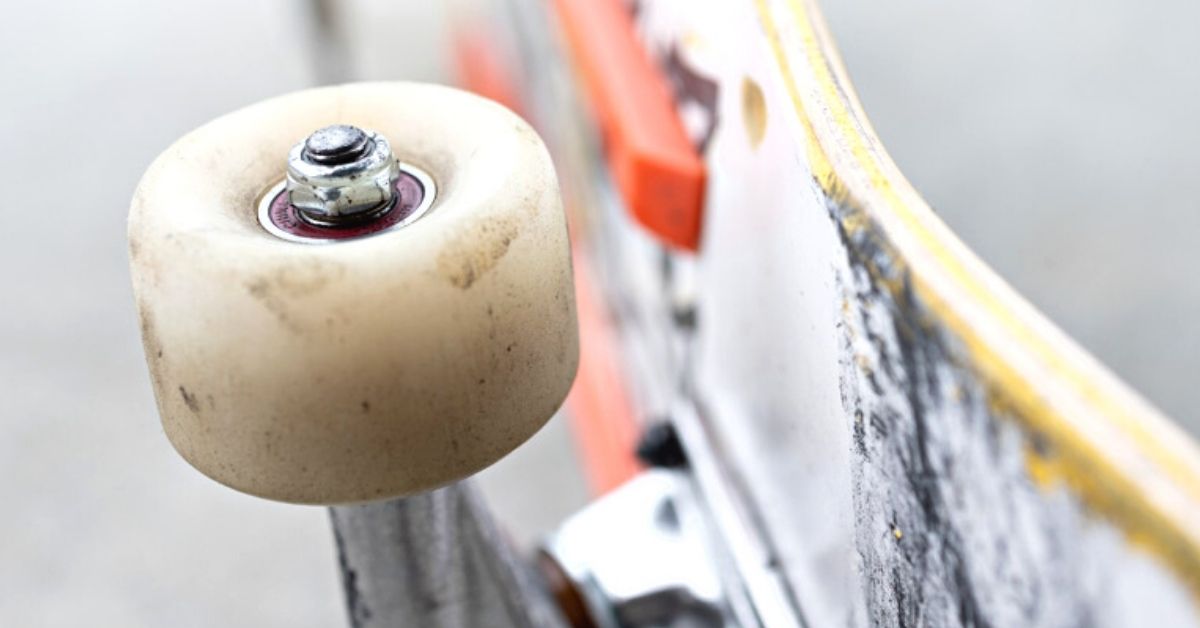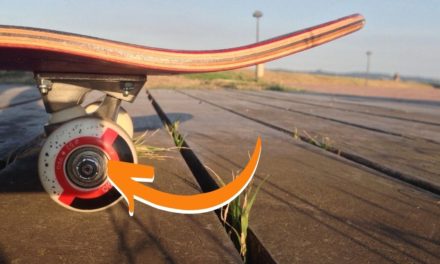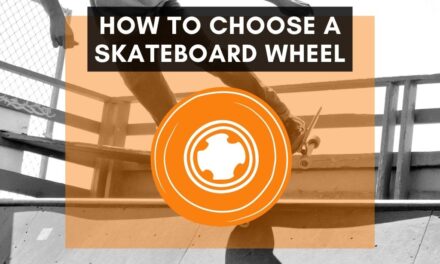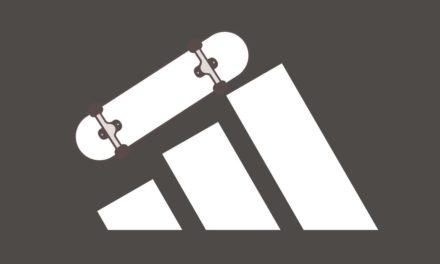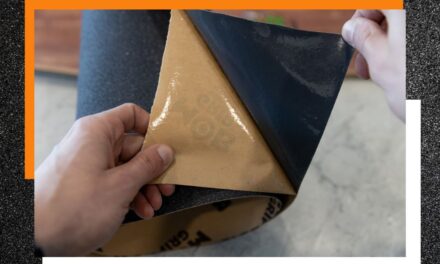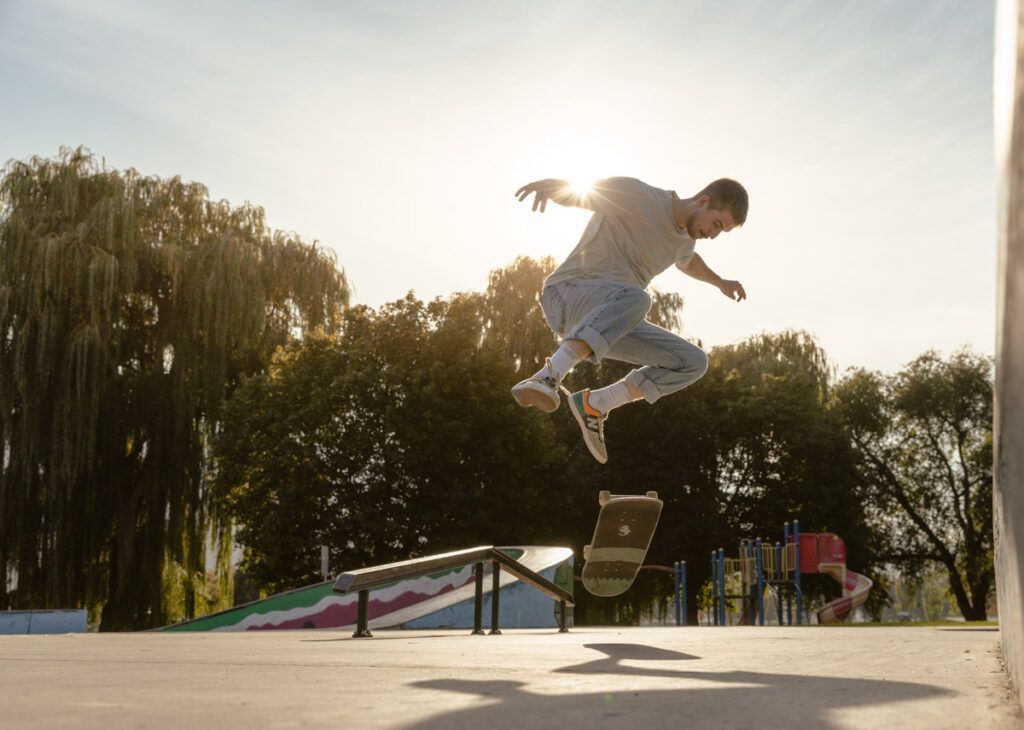When looking for a new set of skateboard wheels, the wheel diameter plays a big role in how the wheel performs. Unfortunately, there isn’t one size that’s best for everyone since the perfect wheel size comes down to what you plan on skating. For example, someone who skates bowl will want a different size wheel than someone who skates street. Likewise, someone who just wants to cruise will want a different wheel size than someone who still wants to try tricks. The table below offers a quick glance at what wheel size will serve you best, based on your type of skating:
| Skating Style | Recommended Wheel Size | Recommended Wheel Hardness |
|---|---|---|
| Street & Tricks | 50mm – 54mm | 99a – 103a |
| Bowl & Mini Ramp | 54mm – 58mm | 97a – 99a |
| Cruising | 56mm – 60mm | 78a – 87a |
| Beginner | 54mm – 56mm | 92a-99a |
With these recommendations in mind, the wheel size you choose will primarily affect how your skateboard accelerates, turns, and how smooth the ride feels. So, to help you better choose the right wheel size for your setup, let’s get into the nitty-gritty details.
Does Your Skateboard Wheel Size Make A Difference?
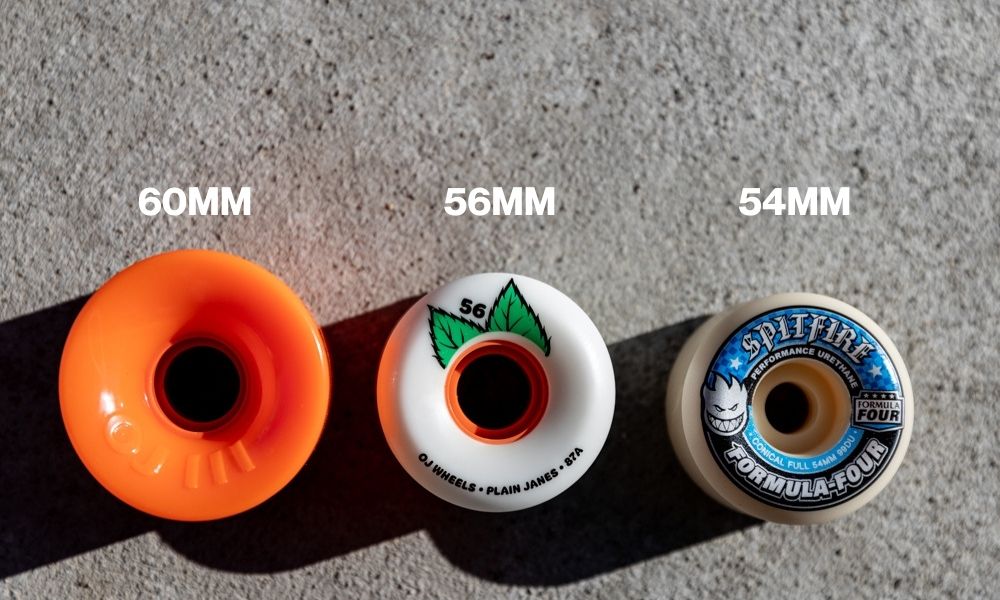
The main difference between a small and a large diameter wheel is that a small wheel won’t roll as fast as a larger wheel. Therefore, when skating a smaller diameter wheel such as 50mm, you will notice your skateboard doesn’t hold speed well compared to someone skating on larger wheels. However, the advantage of these smaller wheels is that they are lighter and easier to slide, making them ideal for flat ground tricks and technical skating.
Larger wheels such as 55mm – 60mm are noticeably heavier than smaller wheels but with the advantage of holding speed and feeling more stable. So for riding bowls or bombing hills, larger wheels are ideal. Just remember that with larger wheels above 55mm, you need to get a 1/4″ or 1/2″ riser to avoid wheel bite. More on that later.
For most beginner skaters, getting a wheel size somewhere in the middle is the best idea. For example, 54mm or 55mm wheels are great for beginners since they hold speed reasonably well when you want to cruise but are still small enough to learn tricks with.
Why Wheel Hardness Matters Too
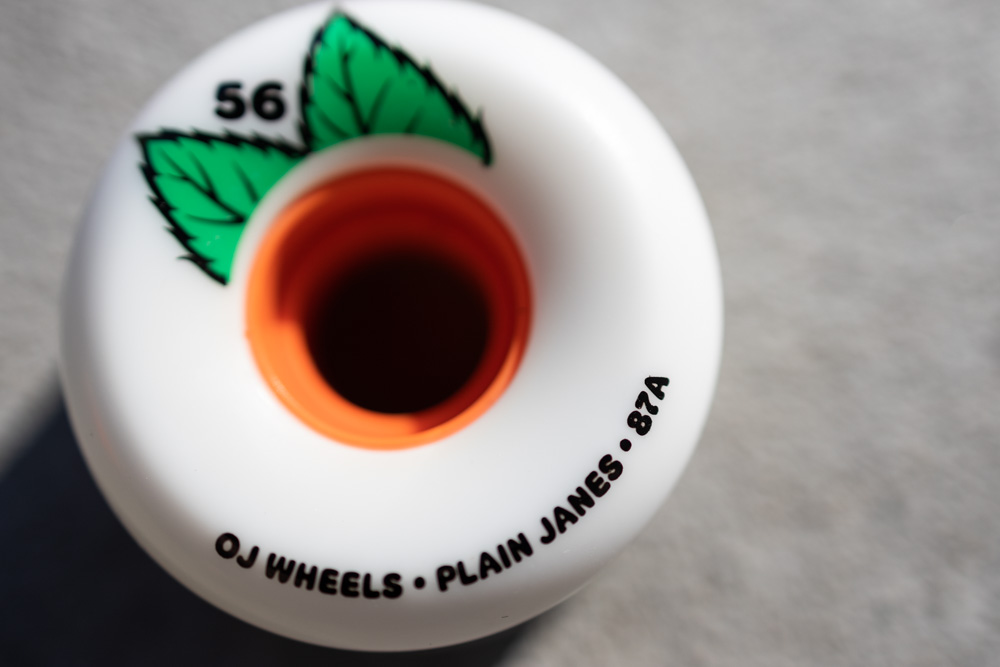
With that said, wheel size is only one part of the puzzle. Even with the right diameter in mind, wheel hardness is another choice that makes a big impact on the performance of your wheel. Luckily, wheel hardness (aka durometer) is pretty easy to understand.
Skateboard wheel durometers typically range between 78a and 103a, with the higher number indicating a harder wheel. For example, a 99a wheel would be much harder than an 87a wheel.
The “a” after the rating is meant to indicate the durometer scale being used, which in this case is the A-scale. However, some manufacturers opt to use the B-scale for durometer ratings, equivalent to 20 points less than the A-scale. That means a wheel rated 79b is the same hardness as a 99a wheel.
A softer wheel will generally feel smoother to ride on rough roads and has far better grip, making powerslides slightly harder and offering more support on tight turns. Meanwhile, hard wheels transfer more vibration on rough roads but roll much faster on smooth concrete, like at a skatepark. Harder wheels are also easier to pivot and powerslide with, making certain tricks easier to land or add style to.
How Are Skateboard Wheels Measured?
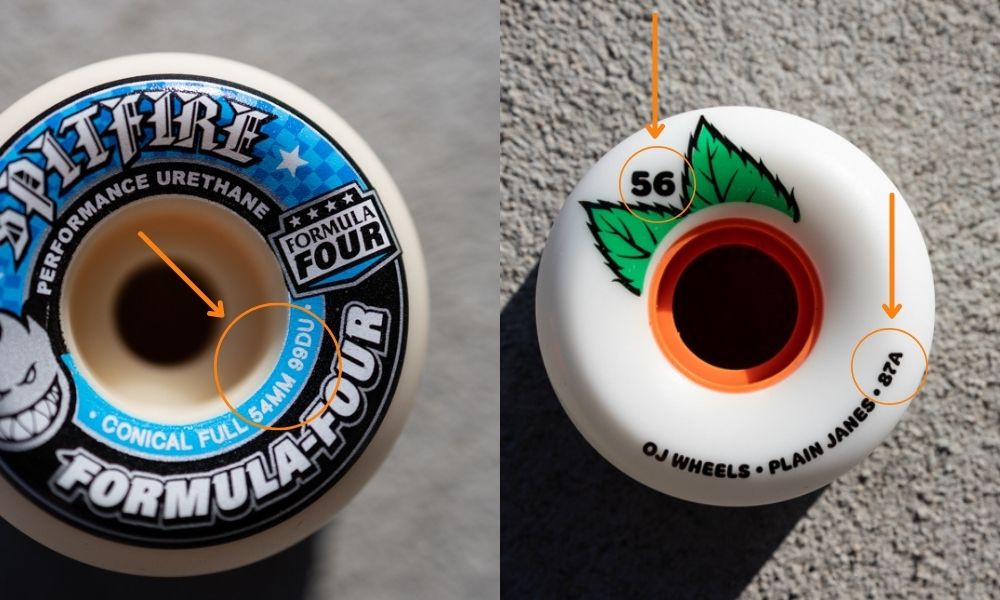
Skateboard wheels are measured in millimeters, with the wheel diameter being the measurement edge to edge of the wheel.
Besides the overall diameter, wheels have varying contact patch widths, once again measured in millimeters. The contact patch is the active area of the wheel that makes contact with the ground. Many harder, trick-specific wheels have narrow contact patches, such as the Pig Prime Wheels with a 17.5mm contact patch. Meanwhile, wider wheels meant for cruising or bowl have a wider one, such as the OJ Elite Hardlines with a 23mm contact patch.
But what exactly is the difference between a narrow and wide contact patch?
Narrow Vs Wide Contact Patches
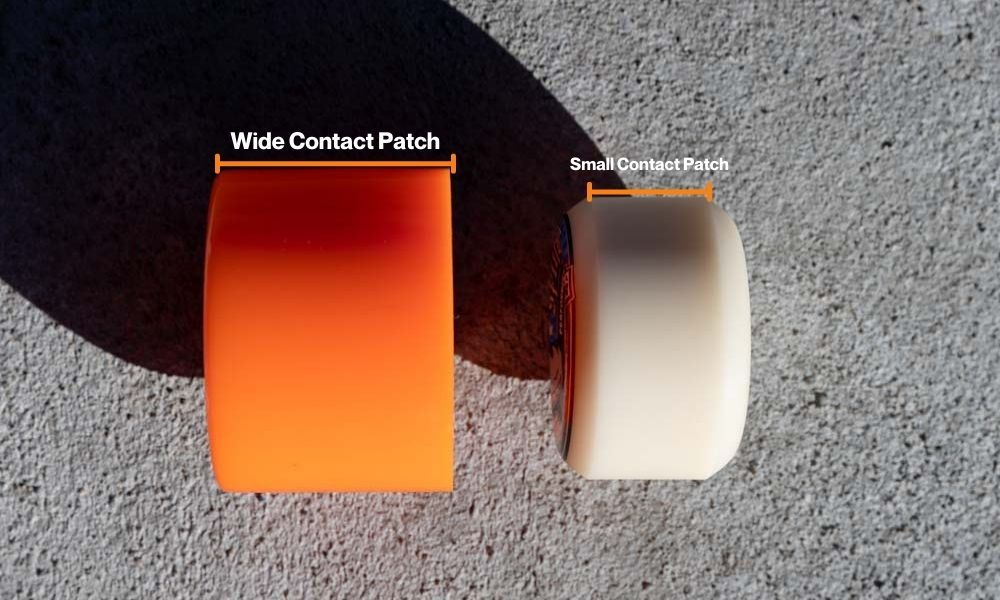
With a smaller contact patch, your wheel has less surface area touching the ground. This is great to reduce friction and allow the wheels to pivot and slide easier. For coming out of board slides, grinds, or any rotational tricks, a smaller contact patch is more forgiving if you try to pivot out of a trick.
A wider contact patch has more surface area on the ground, therefore increasing the friction your wheel has with the ground. This is great for giving you better traction through turns and stability at high speeds. That’s why wheels with wider contact patches are great for bowl riding in particular.
Although you can go far to either end of the spectrum, trying to get the most narrow or widest contact patch possible, it ultimately comes down to your skating style and weight. Of course, if you skate flat ground and ledges without ever touching a quarter pipe, a narrow wheel is the way to go. However, many skaters like the option to do a bit of everything. Likewise, some wheels will feel more or less grippy based on your weight since a heavier person can slide their wheels easier.
So let’s break down the differences in a direct comparison.
Narrow Contact Patch:
- Best for flat ground and tech tricks
- Less stable when turning
- Easier to pivot and powerslide
- Not ideal for heavier skaters
Wide Contact Patch:
- Best for high speeds and bowl
- Great stability
- More grip but harder to powerslide
- Good for beginners
Rather than hyper-focusing on the exact contact patch measurements, just take a look at the wheels at your nearest skate shop. You can easily see the difference between a wide or more narrow wheel, so use the tips above to decide which one will be right for your skating.
What Are The Most Common Skateboard Wheel Sizes?
The most common skateboard wheel sizes are 52mm, 53mm, 54mm, and 55mm. These wheel sizes are great for learning tricks, riding skateparks, or finding new street spots. As for the durometer, the most common option is 99a.
A good rule of thumb is that the more trick-oriented you are, the smaller and harder your wheel choice should be. Meanwhile, if you plan to mostly cruise around town or commute to work on your skateboard, a larger, softer wheel is the way to go.
What’s The Best Skateboard Wheel Size To Buy?
– Best Wheel Size For Tricks – 50mm – 54mm
For tricks on flat ground, rails, and ledges at the skatepark or in the streets, a 50mm to 54mm wheel is ideal. Since speed isn’t the number one priority, a smaller wheel helps reduce the weight of your board while also being easier to slide around with your weight. For adding a steezy pivot out of a trick, a smaller wheel makes life much easier.
I wrote another article covering the best skateboard wheels for tricks and street here, but if you just want a couple of quick recommendations, here are some solid options to look at:
- Bones STF V3 Slims 99a (Best Overall)
- Spitfire Formula Four Tablets 99a (Great For Flat Ground)
- Ricta Naturals 101a (Best For Tech Tricks At Skateparks)
Ultimately the best wheels for tricks are going to be smaller and harder wheels since they’re easier to maneuver. If you don’t plan on skating at the skatepark often, and instead plan to skate on the road outside your house or in the streets, opt for a softer wheel with a 95a – 97a durometer. That way the vibrations from rough pavement won’t be as intense.
– Best Wheel Size For Bowls – 54mm – 58mm
For skating bowls, pools, or mini ramps, a bigger wheel helps to maintain speed and lock into coping better. Between 54mm and 58mm is ideal, but just remember to get a 1/4″ riser for 56mm to 57mm, with a 1/2″ riser for 58mm wheels. The riser creates more room between your wheel and your deck to prevent you from getting wheel bite.

I share some of my top wheel picks for bowls and pools here, but here are some quick options to consider if you’re in a rush:
- Spitfire Formula Four Conicals 99a (Best Overall)
- OJ Elite Hardlines 99a (Best For Locking Into Coping)
Both of these wheels have a very wide contact patch giving you solid grip when leaning hard into a carve. Besides the larger diameter, a larger contact patch is crucial for riding the bowl. The added friction gives you way more grip when railing corners, plus they feel stable at just about any speed. If you’re heading into your local shop to buy a set of wheels specifically for the bowl, make sure to look at the wider wheel options they have available in this diameter range!
– Best Wheel Size For Cruising – 56mm – 60mm
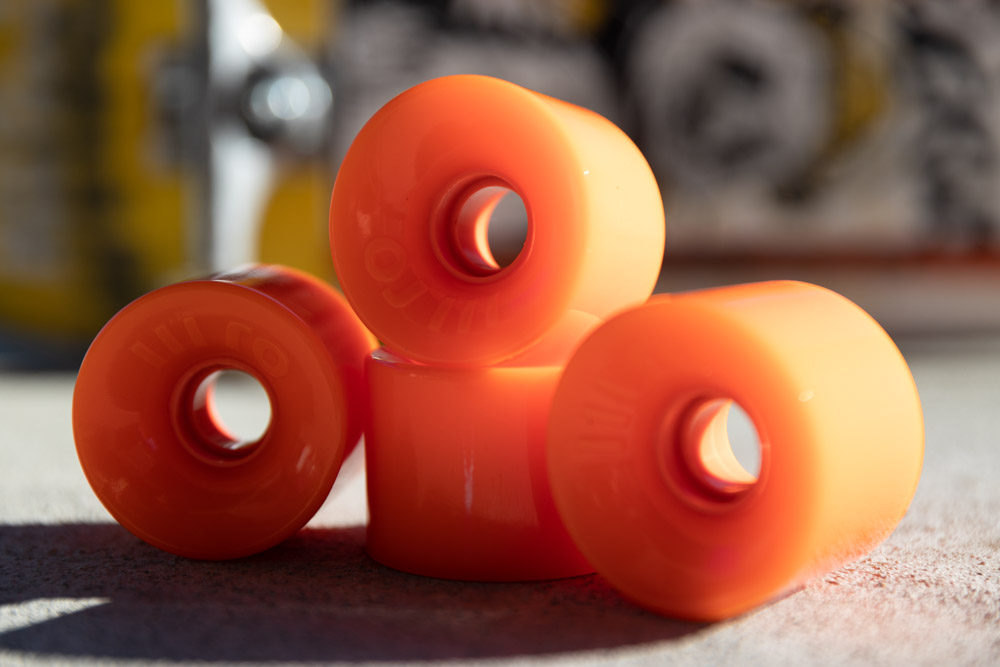
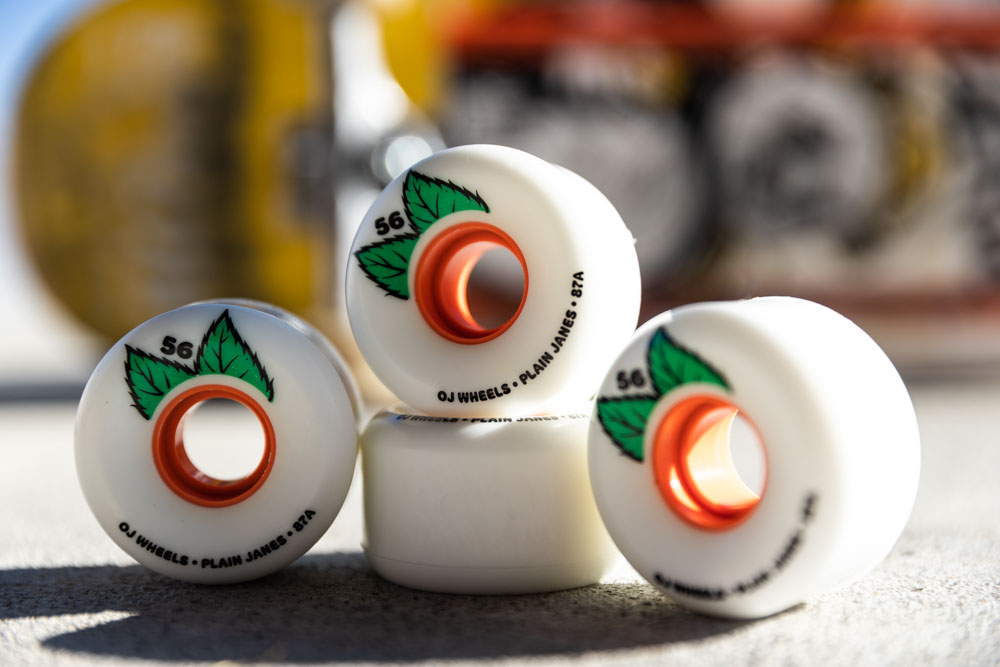
Now if tricks aren’t a focus of yours and you just love cruising around town or skating to work or school, you want to choose a bigger softer wheel. A larger wheel will help you hold and maintain speed so you don’t need to push every second, while a softer durometer will absorb the vibrations from cracks in the pavement or rough concrete.
Here are a couple of wheels I love to use for cruising and would recommend looking into:
- OJ Keyframes 87a (Best Overall)
- OJ Hot Juice Wheels 78a (Ultimate Smooth Cruising Wheel)
Remember that you will need to get a riser for wheels in this size range. Like I mentioned earlier, go for a 1/4″ riser for 56mm – 57mm wheels, with a 1/2″ riser for 58mm+ wheels. Anything beyond 60mm starts to get a bit too big for skateboards and drifts into longboard territory as you get closer to 70mm.
With a larger wheel on a standard skateboard deck, you increase the chances of getting wheel bite when you turn with wheels over 60mm. Even with risers, you don’t have a lot of side-to-side play before the wheel and deck touch. So as tempting as it might be to go bigger than 60mm, use the 56mm to 60mm diameters as a guideline for any cruiser setup you build.
– Best Wheel Size For Beginners – 54mm – 56mm
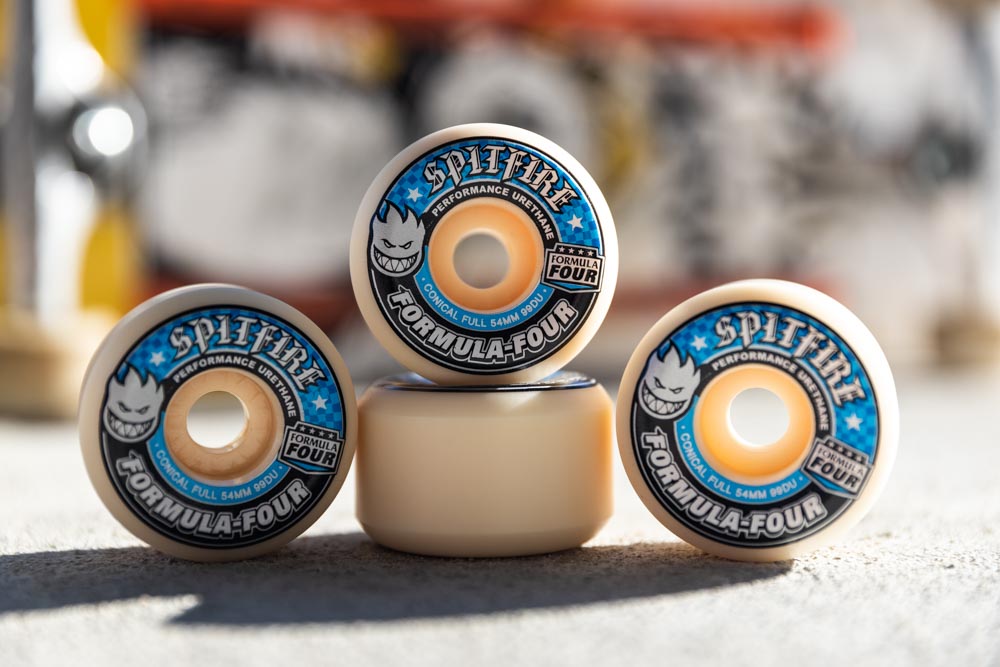
Lastly, opting for a slightly larger wheel is the best idea if you’re just getting started in skateboarding. Since a larger wheel is more stable, often has more grip, and rolls faster, it’s a more enjoyable wheel to learn with. As for durometer, 99a is a great place to start, but if you know you’ll primarily skate on rough concrete like the street, going for a softer wheel is a better idea.
I share a list of my favorite skateboard wheels for beginners here, but below are a few options you should consider if you just want to get skating:
- Ricta Clouds 92a (Best For Rough Roads & Skateparks)
- Spitfire Formula Fours 99a (Best Durability For Skatepark Skating)
- OJ Elite Nomads 95a (Best In-Between Wheel)
Since beginners often don’t know exactly what they want to skate until they try it, it is a good idea to get a wheel that can do it all. That way, you can enjoy yourself whether you’re skating bowl, rails, flat ground, or cruising. With a 54mm to 56mm wheel, it will take longer for the wheels to wear down too, so it improves the lifespan compared to a small 50mm wheel. Staying at a durometer of 92a or above, you can still do tricks and pivot your wheels but don’t have to deal with as intense vibrations from rough roads if you don’t need to.
So the moral of the story here is that, yes, wheel size does matter for your skateboard. However, there’s no one size fits all answer since different wheel sizes have pros and cons. Before you settle on a certain wheel size, first consider what type of skater you are and what you intend to skate. Once you have those answers, it’s a lot easier to figure out which wheel to get!
Happy Shredding!
Brendan 🙂
